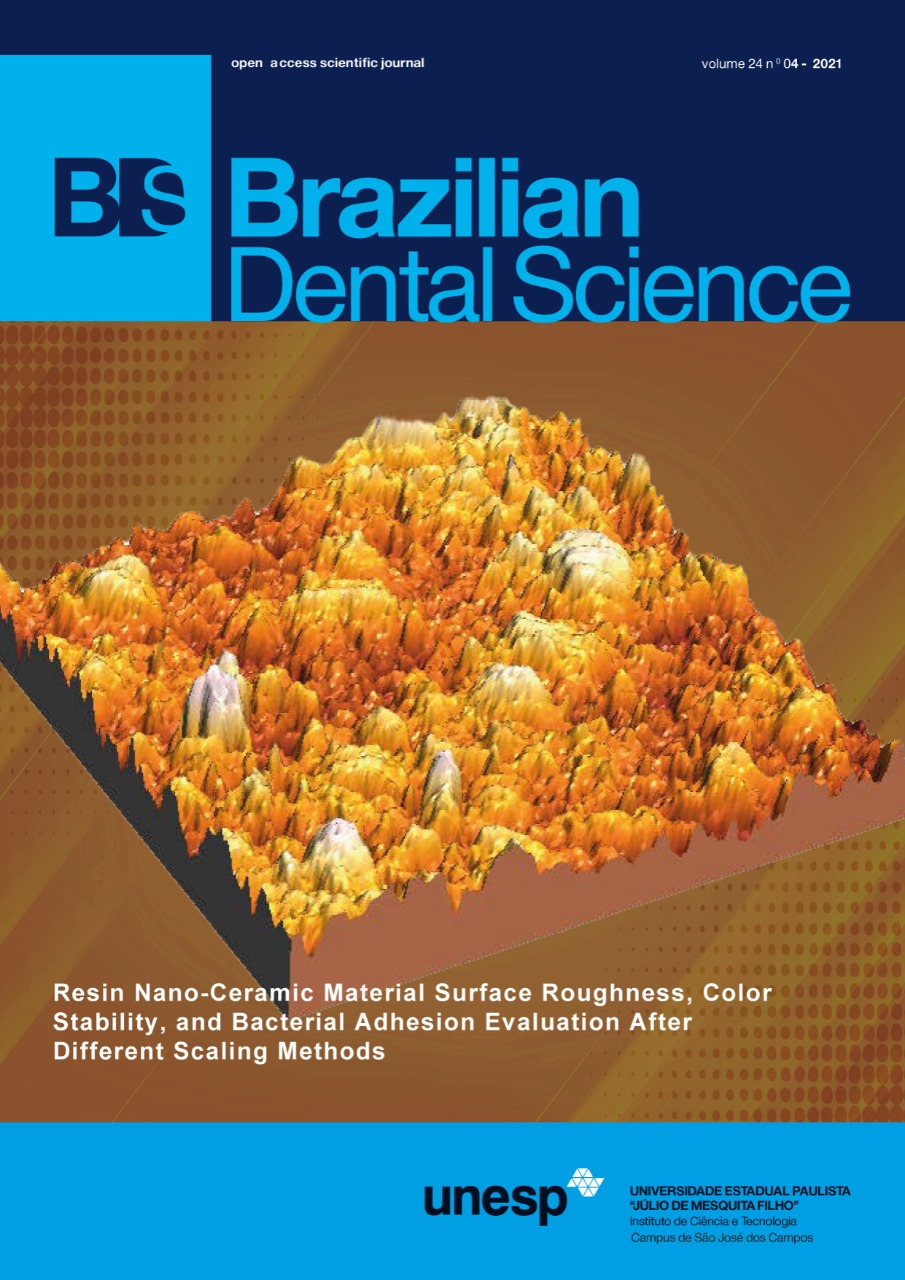Evaluation of biocompatibility of veneered Bio HPP and veneered lithium disilicate crowns in anterior zone (Randomized controlled clinical trial)
DOI:
https://doi.org/10.14295/bds.2021.v24i4.2700Abstract
Objective: Evaluation of the biocompatibility of Bio-High Performance Polymer (Bio HPP) crowns veneered with Visio-Ling versus e.max crowns veneered with e.max veneering system. Material and Methods: 42 full-coverage crowns were fabricated for maxillary anterior teeth. A swap was obtained using a sterile paper cone to determine bacterial count and type. Pocket depth (PD) was determined using a William Periodontal probe. Measurements were repeated after 3, 6, 9 and 12 months respectively. Patients were randomly divided into: Group A fabricated from IPS e.max crowns and Group B fabricated from Bio HPP crowns. The preparations were standardized with an equi-gingival, finish line. Fisher’s test was used to compare between the two groups. The significance level was set at P 0.05. Statistical analysis was performed with Windows, Version 23.0. (IBM SPSS Statistics) Armonk, NY: IBM Corp. Results: Bio HPP and e.max showed no statistically significant difference in bleeding on probing and PD except after 9and 12 months; Bio HPP showed statistically significantly higher PD than e.max (P-value = 0.027, Effect size = 0.245) and (P-value = 0.011, Effect size = 0.310), respectively. Fisher’s test showed there was no statistically significant difference between total bacterial counts and the type of the two materials. Conclusion: Both e.max and Bio HPP crowns revealed successful biological behavior. No significant difference between the materials regarding the bacterial count and type as well as the pocket depth, however after 9 and 12 months, Bio HPP showed a higher significant difference PD than e.max.
Keywords
Biocompatibility; Bio HPP; e.max; Pocket depth; Bacteria.
Downloads
Downloads
Published
How to Cite
Issue
Section
License
Brazilian Dental Science uses the Creative Commons (CC-BY 4.0) license, thus preserving the integrity of articles in an open access environment. The journal allows the author to retain publishing rights without restrictions.
=================




























